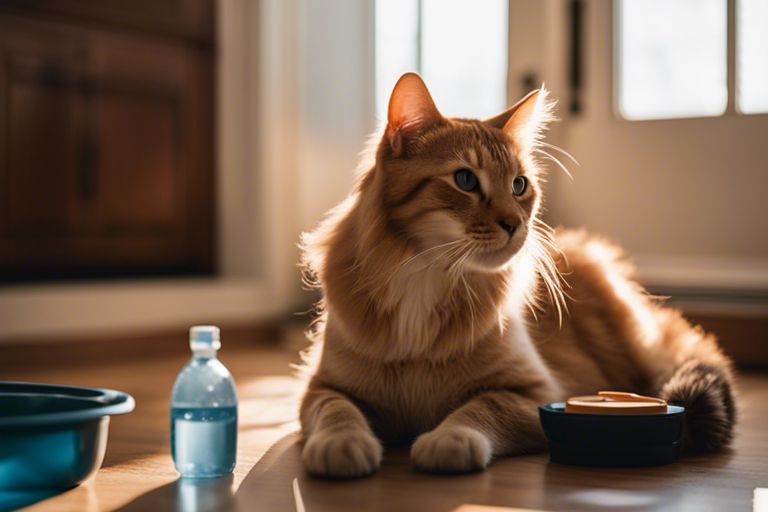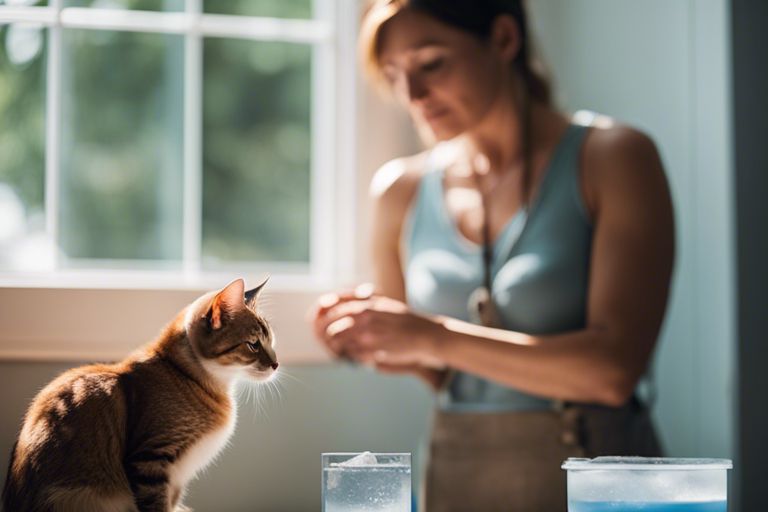Recognizing the early signs of heatstroke in your feline friend can save their life. As the temperatures rise, it’s crucial to keep an eye on your cat and be aware of the signs that they may be suffering from heatstroke. Excessive panting, drooling, lethargy, and vomiting are some of the first indicators that your cat may be overheating. It’s important to take immediate action if you notice any of these symptoms, as heatstroke can be fatal if not treated promptly. In this blog post, we will discuss in detail the signs of heatstroke in cats, as well as what you can do to help prevent it and keep your feline companion safe and healthy during the hot summer months.
Key Takeaways:
- Excessive Panting: Panting excessively and rapidly is a common sign of heatstroke in cats, especially if they are unable to cool down.
- Difficulty Breathing: Labored or shallow breathing can indicate heatstroke, as the body struggles to regulate its temperature.
- Lethargy and Weakness: A cat suffering from heatstroke may appear unusually tired and weak, with reduced energy levels.
- Vomiting and Diarrhea: Heatstroke can cause gastrointestinal distress, leading to vomiting and diarrhea in affected cats.
- Seizures or Collapse: In severe cases, heatstroke may lead to seizures or sudden collapse, indicating a life-threatening emergency.
 Recognizing Heatstroke
Recognizing Heatstroke
The signs of heatstroke in cats can be quite subtle, so it’s important to know what to look for. The Heatstroke in cats article from PDSA provides an in-depth look at the condition. Here are some of the key signs to watch out for so you can act quickly if your furry friend is in distress.
Behavioral Signs of Distress
When a cat is suffering from heatstroke, you may notice changes in their behavior. They might become restless, pant excessively, or seem disoriented. Additionally, they may become unresponsive or seem lethargic. If you notice any of these signs, it’s essential to take action immediately to cool your cat down and seek veterinary help.
Physical Symptoms to Look For
In addition to changes in behavior, there are several physical symptoms of heatstroke in cats. You might notice that your cat’s gums and tongue appear bright red, indicating that they are struggling to regulate their body temperature. They may also drool excessively and have difficulty breathing. Additionally, their pulse may become rapid, and they may vomit or have diarrhea. If you notice any of these physical symptoms, it’s crucial to take action as quickly as possible to prevent further complications.
By staying alert to these signs and symptoms, you can help prevent your cat from succumbing to heatstroke. Remember, acting promptly when you notice any of these dangerous signs can save your pet’s life.
Risk Factors and Prevention
Some risk factors for heatstroke in cats include high environmental temperatures, high humidity, obesity, and respiratory conditions. Heatstroke can be prevented by keeping your cat cool and providing access to shade and water during hot weather. Additionally, monitoring your cat’s outdoor activity and keeping them indoors during the hottest parts of the day can help prevent heatstroke. This is especially important for cats with pre-existing health conditions that may increase their risk.
Conditions That Increase Risk
Although all cats are susceptible to heatstroke, certain conditions can increase their risk. Cats with respiratory conditions such as asthma or bronchitis, as well as obese cats, are at a higher risk for heatstroke. Additionally, elderly cats and kittens are more susceptible to the effects of heat. It’s important to be mindful of these factors and take extra precautions to keep your cat cool and comfortable in hot weather.
Strategies for Heatstroke Prevention
To prevent heatstroke in your cat, make sure to provide plenty of fresh water and access to shade on hot days. If your cat spends time outdoors, consider creating a cool, shaded area for them to rest. You can also set up a fan or air conditioning in your home to help keep the indoor environment cool. Additionally, avoid leaving your cat in a car in hot weather, as the temperature can quickly become dangerous for them. By being proactive and implementing these strategies, you can help prevent heatstroke in your cat and ensure their well-being during the summer months.
Emergency Response
Keep in mind that heatstroke is a life-threatening emergency for your cat. It’s crucial to act quickly and decisively if you suspect your cat is suffering from heatstroke. Time is of the essence, so it’s important to know what to do in this situation.
Immediate Actions to Take
If you suspect your cat is suffering from heatstroke, the first thing you should do is move them to a cooler environment. This could be a shaded area, an air-conditioned room, or simply indoors with a fan. Next, you should carefully wet your cat with cool water, making sure not to use cold water as it can shock their system. You can also apply towels soaked in cool water to their skin. Offer small sips of water if your cat is alert and conscious, but never force them to drink. Finally, it’s important to take your cat’s temperature rectally, if possible, and continue to cool them until their temperature drops to 103°F (39.4°C). It’s vital to act quickly and efficiently to prevent further damage to your cat’s organs.
When to Seek Veterinary Care
If you have taken the immediate actions to cool your cat and their temperature is not dropping, or if they are showing signs of severe heatstroke such as seizures, vomiting, or collapse, it is imperative that you seek veterinary care immediately. Heatstroke can cause organ failure and death if not treated promptly by a veterinarian. Even if your cat seems to recover, it’s still crucial to have them examined by a vet to ensure there are no lingering effects of the heatstroke.
Signs of heatstroke in cats
Presently, it is important to be aware of the signs of heatstroke in your cat, especially during the warmer months. Some of the common signs include excessive panting, drooling, lethargy, vomiting, and collapsing. If you notice any of these symptoms in your cat, it is crucial to act quickly and help them cool down. Move them to a cool, shaded area, offer them water to drink, and use a damp cloth to gently cool their body. However, it is always best to seek immediate veterinary attention to ensure the safety and well-being of your beloved pet. Heatstroke can be a life-threatening condition if not treated promptly, so it is important to stay vigilant and take measures to prevent it from happening in the first place.
FAQ
Q: What are the signs of heatstroke in cats?
A: The signs of heatstroke in cats include excessive panting, drooling, lethargy, vomiting, and/or diarrhea. You may also notice your cat seeming disoriented or uncoordinated. In severe cases, heatstroke can lead to collapse, seizures, or even death.
Q: How can I prevent heatstroke in my cat?
A: To prevent heatstroke in your cat, it’s important to provide access to cool, shaded areas and plenty of fresh water. Avoid leaving your cat in a hot car or exposed to direct sunlight for extended periods. Keep your home well-ventilated and consider using fans or air conditioning during hot weather. Additionally, avoid overexerting your cat in high temperatures and be mindful of outdoor activities during the hottest parts of the day.
Q: What should I do if I suspect my cat has heatstroke?
A: If you suspect your cat has heatstroke, it’s crucial to act quickly. Move your cat to a cool, shaded area and offer water to drink. You can also wrap your cat in a cool, damp towel to help lower their body temperature. It’s important to seek veterinary care immediately, as heatstroke can be life-threatening if not treated promptly. Do not attempt to force your cat to drink water, as this can cause further complications. Always consult with a veterinarian for professional guidance and treatment.

Jayley, a devoted cat enthusiast, also writer for other cat blog as well. She aims to dedicated to providing comprehensive information, insights, and advice on everything you’d ever want to know about our whiskered companions.
